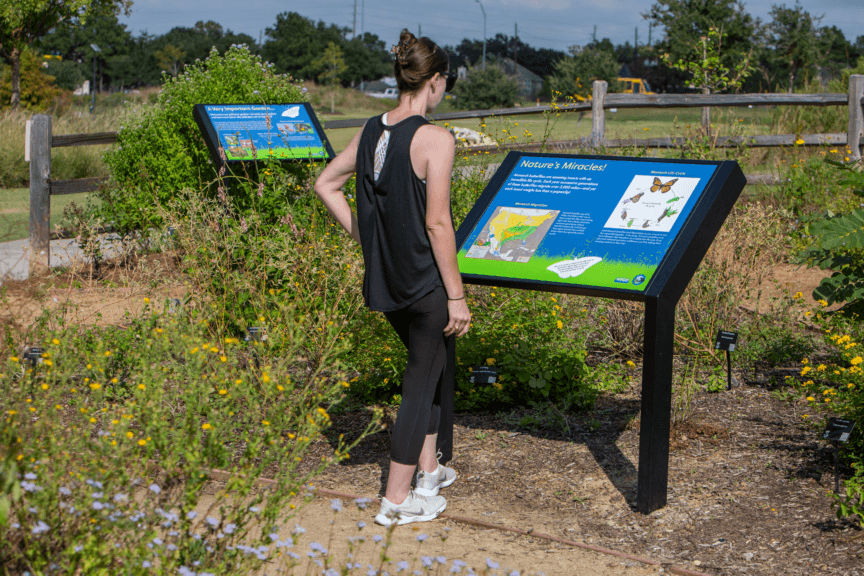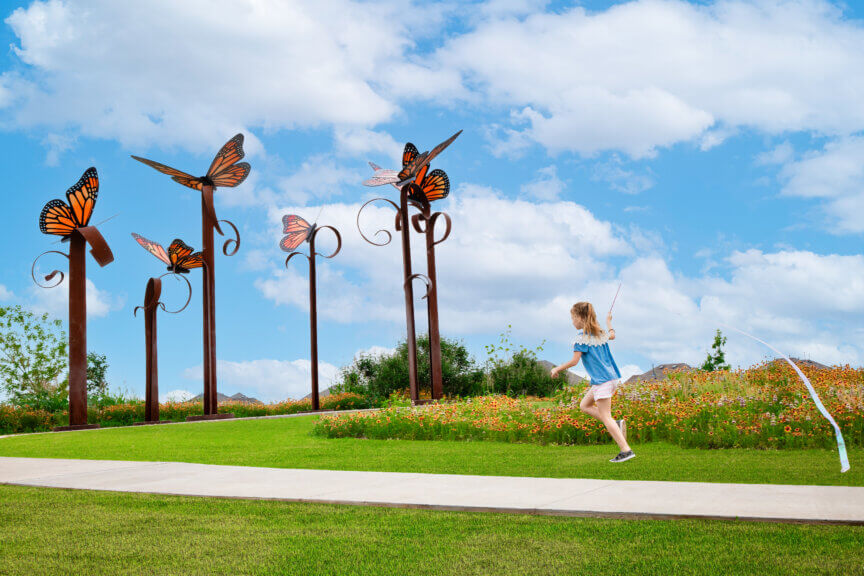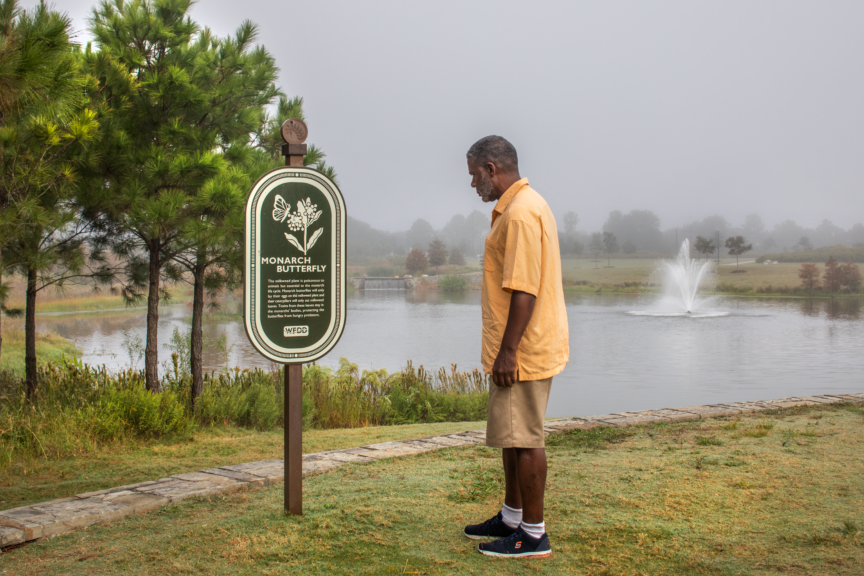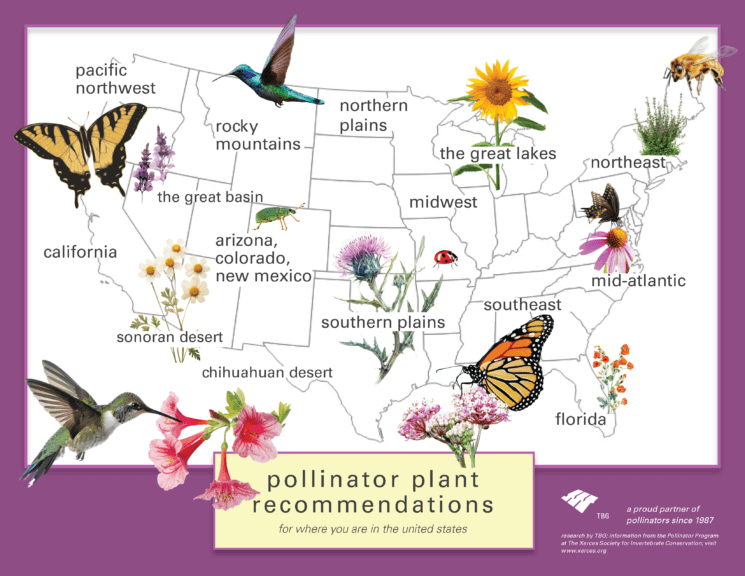pollinator-forward designs
it’s national pollinator week!
Pollinators are worthy of celebration for many reasons! Our future relies on pollinators. Did you know? Most plants require the assistance of pollinators to produce seeds and fruit. Nearly 80% of all flowering plants and over 75% of the staple crop plants that feed humankind rely on animal pollinators.
Ants, bats, bees, beetles, birds, butterflies, flies, moths, reptiles, slugs, and wasps act as pollinators. Honey possums and lemurs are also considered pollinators – with black and white ruffled lemurs being the world’s largest pollinator.
According to fs.usda.gov, pollinators are responsible for 1 out of every 3 bites of food you eat – thank a pollinator for that next bite!
Not just for producing food-source, pollinator plant species play multiple roles in the ecosystem, including providing nectar food-source, acting as hosts for larvae development, and attracting other beneficial insects, like lady bugs.
At TBG, we support pollinators in several ways across our practice.
Certified Monarch Waystation Habitats
Adult Monarch butterflies need dependable sources of nectar to fuel their annual fall migration. In the spring, Monarch caterpillars must have milkweed – their host plant – to complete their life cycle. If you plant both milkweed and native wildflowers, you’ll be helping these amazing creatures on their way! Monarch Waystations are places that provide resources necessary for monarch butterflies to produce successive generations and sustain their migration. These habitats provide milkweed, nectar, and shelter.
The Milkweed plant is poisonous to animals but essential to the monarch life cycle. Monarch butterflies will only lay their eggs on the milkweed plant and their caterpillars will only eat milkweed leaves. Toxins from these leaves stay in the monarchs’ bodies, protecting the butterflies from hungry predators.
TBG has two official Waystations on projects, with more being talked about and designed for.
Waystation #7778 – The Parish School in Houston, Texas: Registered since 2014
Waystation #23821 – Willow Fork Park in Katy, Texas: Registered since 2019
Monarch Butterflies stop off at Willow Fork Park on their way to Mexico each fall. After overwintering high in the Sierra Madrea Mountains, successive generations of these beautiful creatures fly north through Texas again towards their northerly homes where they spend the summer months.

Interested in helping monarch butterflies and registering your garden as a waystation? Learn more about the Monarch Waystation Program.
Pollinator-Forward Design Fetes
Native pollinators need native plants and natural landscapes to survive. TBG is helping by:
Created a butterfly highway at Mission Bend MUD 2; ¾ mile stretch. Plantings include native plants like Texas Yellow Bells, Texas Sage, Live Oaks, and Sweetbay Magnolia
- _At Alief School in Houston, restored prairie habitat makes it easy for biodiversity to flourish
- _Backyard Park at Pomona is a hummingbird haven, with more pollinator-forward parks on the books; large plantings of Turk’s Cap provide red tubular flowers known for attracting hummingbirds
- _At The Grid, sustainable approaches like integrated bioswales treat stormwater and offer water to deep-rooted plants, providing habitat for pollinators
- _At City of Austin’s Planning and Development Center, an established and thriving wildflower meadow provides food sources for passing-through pollinators
- _Shelby Ranch, once complete, will feature an entirely native plant palette tailored to individual program intent of the spaces, including harvestable herbs in the outdoor kitchen area, pollinator plants for the bees, and small fruiting shrubs around the chicken coop for supplemental feed
- _At Easton Park, swaths of Gregg’s Purple Mistflower provide ample feeding for Queen butterflies
Browse pollinator-friendly plants by region or insect
Designs Inspired by Pollinators


